Special Report
Must-Visit Hidden Parks in America's 25 Biggest Cities
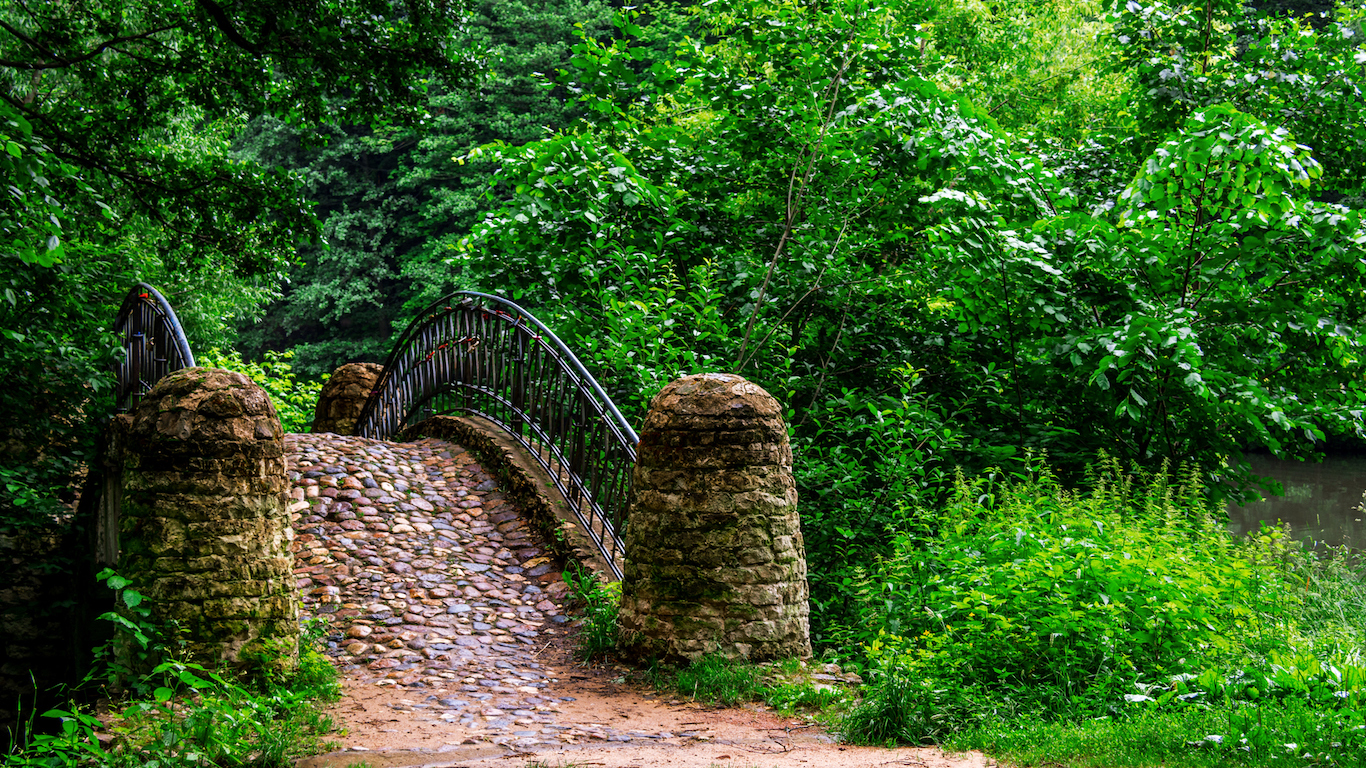
Published:
Last Updated:

Parks and park-like public gardens improve the quality of urban life. What they offer varies from one to the next, but, depending on the particulars, they can be places to exercise or play; walk the dog or turn the kids loose; watch the wildlife or savor the flowers; have a picnic or a barbecue; swim or go boating or fishing; park the RV or pitch a tent. They’re also almost always place to just relax, sprawled on the grass or perched on a bench, reading, meditating, or simply thinking about things, with or without the headphones.
Boston Common, in the middle of the Massachusetts city of that name, is generally considered America’s first urban park; it was designated as an open space for public use in 1634. Some 15 more parks were created around the fledgling nation by 1800, including the National Mall in Washington, D.C., which dates from 1790.
Frederick Law Olmsted, the pioneering landscape architect who designed Manhattan’s Central Park (the first part of which opened to the public in 1859) with architect Calvert Vaux, designed 30 other city parks around the country in the latter 19th century. Olmsted believed that every city needed a park of substantial size to give the citizenry a place for “unbending of the faculties.” He later came to believe that parks should include facilities for recreation as well.
Today, it would be hard to find an American city or town of any size that doesn’t have at least a few public parks. A survey conducted by the nonprofit Trust for Public Land found that, as of 2016, parkland in the 100 largest American cities alone measured over two million acres — and that 69% of the population of those cities lived within a 10-minute walk of a park.
The median size of a city park is 3.8 acres, though the range is enormous. Chugach State Park, mostly within the vast city limits of Anchorage, Alaska, is the largest park in America, spanning 464,318 acres. On the other hand, Mill Ends Park in Portland, Oregon, designated an official city park in 1976, measures a mere 452 square inches. Located on a main downtown thoroughfare, Mill Ends is hardly a hidden park, but in searching the 25 most populous U.S. cities for examples, 24/7 Wall St. found one off-the-beaten-track oases occupying as little as 0.19 acres — as well as another spanning 1,402 acres.
What does it mean for a park to be “hidden?” Some of these are concealed from the street by walls or trees. Others are on private property, though open to the public at least some of the time. Some are in out-of-the-way neighborhoods. One is even secluded within one of the most famous parks in the world. None are among their cities’ main attractions, but all are worth discovering.
Click here for must-visit hidden parks in America’s 25 biggest cities.
Using data from the U.S. Census, 24/7 Wall St. identified the 25 largest U.S. cities by population, then searched through the websites of city and state tourism bureaus, local newspapers, and city magazines to find parks and public gardens identified as “hidden” or “secret.” Consulting descriptions and reviews on these sites, as well as reviews on Yelp and TripAdvisor, we determined which of these lesser-known localities merited mention.
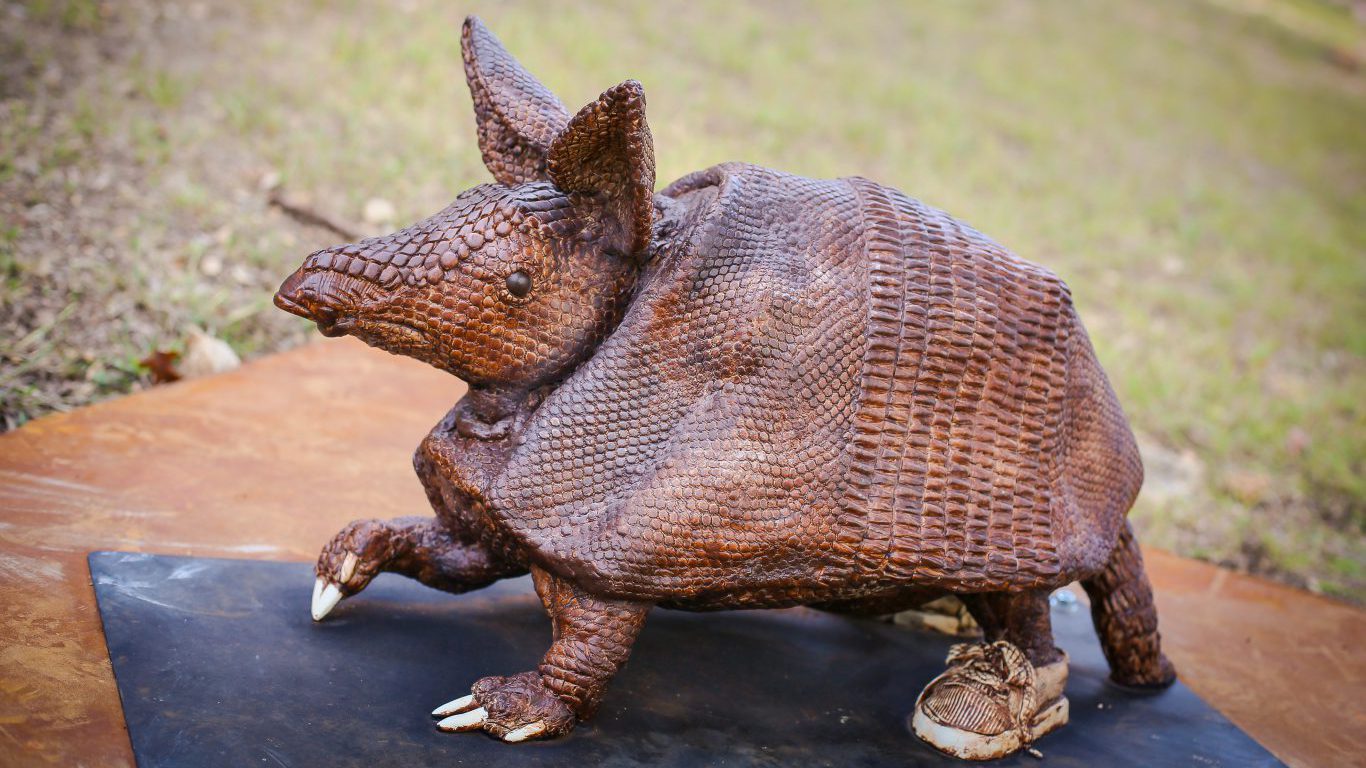
1. Austin, TX
> Park: Bee Cave Sculpture Park
> Area: 7 acres
The unofficial motto of the Lone Star State’s capital city is “Keep Austin Weird,” and the array of sculpture on display, and sometimes for sale, at this park in suburban Bee Cave seems the perfect outdoor expression of that sentiment. In addition to about 25 colorful and often surrealistic works of art (a winged frog on a speckled lily pad, an armadillo with tennis shoes on his rear feet, a cat playing a fiddle), giant oak trees can be found in the park, as well as more than 20 species of native plants and an oversize garden chess board.
[in-text-ad]
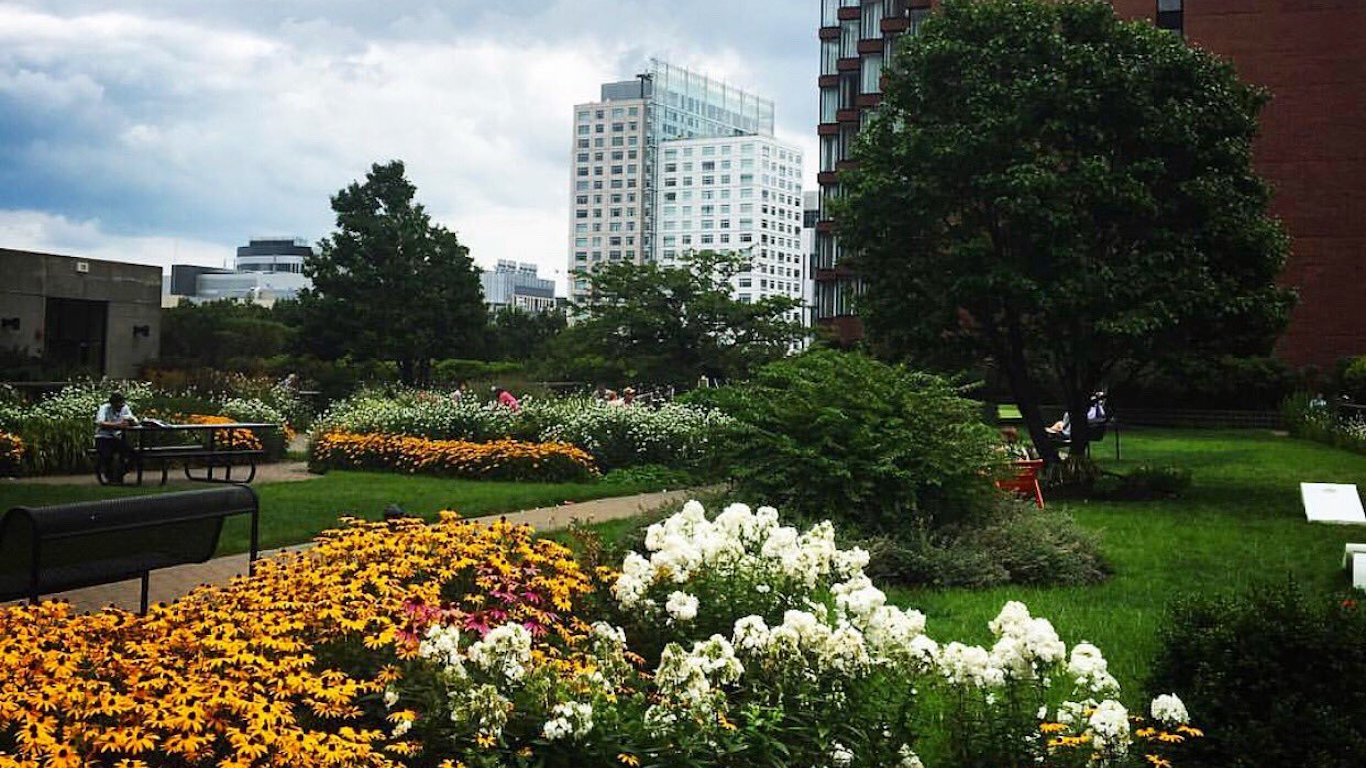
2. Boston, MA
> Park: Kendall Square Rooftop Garden
> Area: 0.75 acres
Not all gardens are earthbound. It’s technically just across the Charles River from Boston, but six stories up from bustling Kendall Square, atop a parking garage, is a rooftop garden complete with lush grass, miniature trees, tulips and rose bushes, brick pathways, and benches and a picnic tables. The advantage of being high up is the views of Harvard University and the Boston skyline.
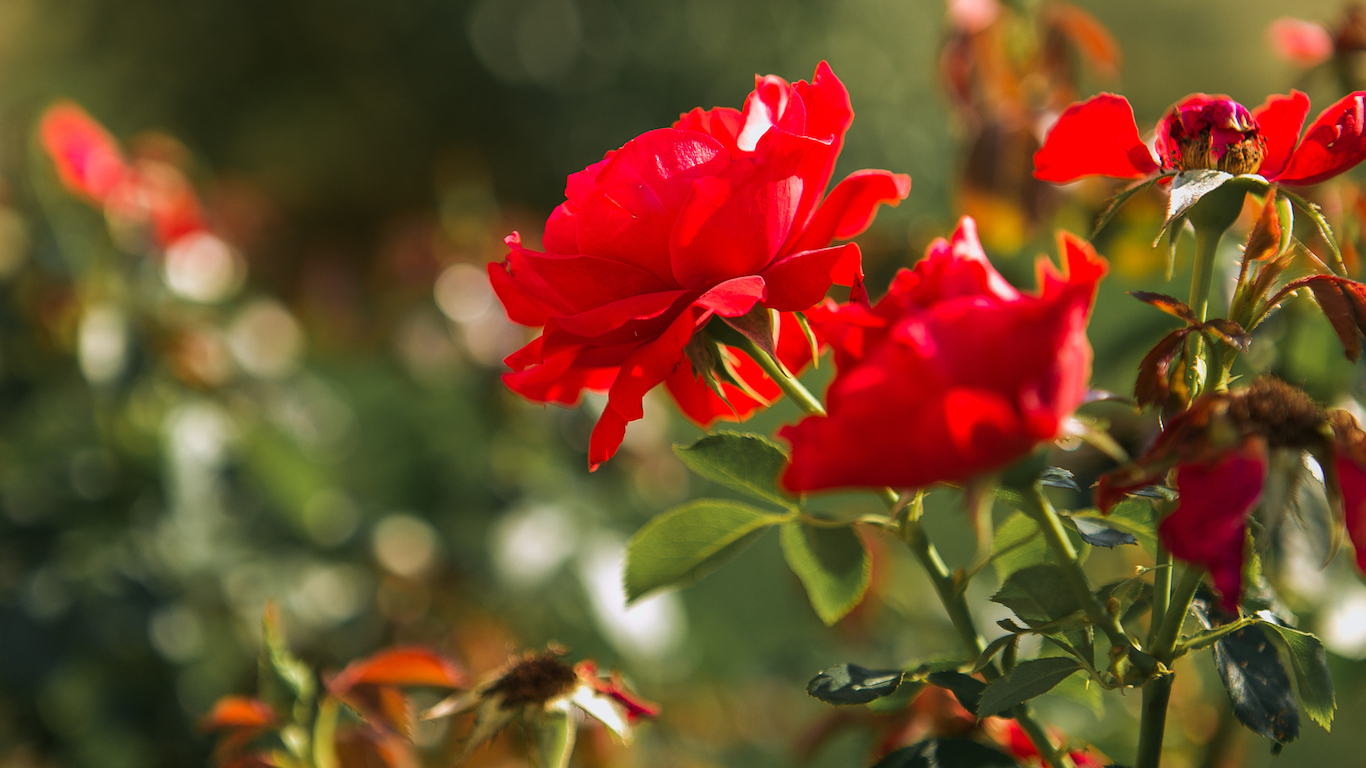
3. Charlotte, NC
> Park: McGill Rose Garden
> Area: 1.33 acres
This collection of about a thousand rose bushes — representing 230 varieties — grow on what was once the site of the Avant Fuel & Ice Company, in an industrial area near the railroad tracks. After Charlotte, North Carolina, businessman and philanthropist Henry McGill bought the business in 1950, his wife, Helen, thinking that the area needed to be beautified, started planting rose bushes along the company’s fences. The fence-side plantings evolved into a garden, which was opened to the public on Mother’s Day in 1962. The fuel and ice company closed in 1975, and the property was sold to the city. It has become a local tradition to visit the garden on Mother’s Day each year.
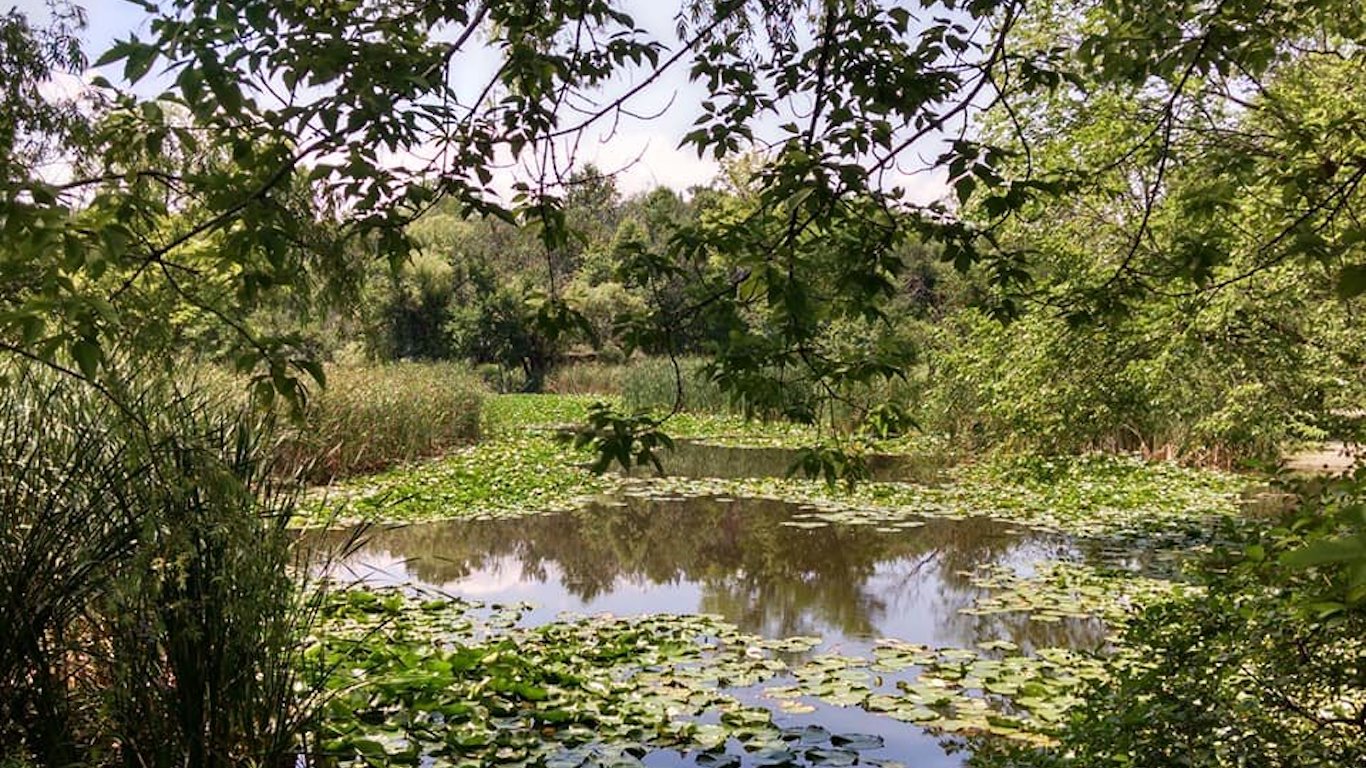
4. Chicago, IL
> Park: North Park Village Nature Center
> Area: 46 acres
The grounds on which this north side Chicago nature center and adjacent Peterson Park now sit were once the property of a 19th-century tuberculosis sanitarium, which closed in 1974. The center is a treasury of Illinois ecosystems. Its acreage encompass wetlands, prairies, forests, and even a rare oak savanna, a grassland with scattered fire-resistant oak trees. A trail through the park for walkers and hikers is marked with explanatory signage, and the park is known as a good place for birdwatching.
[in-text-ad-2]
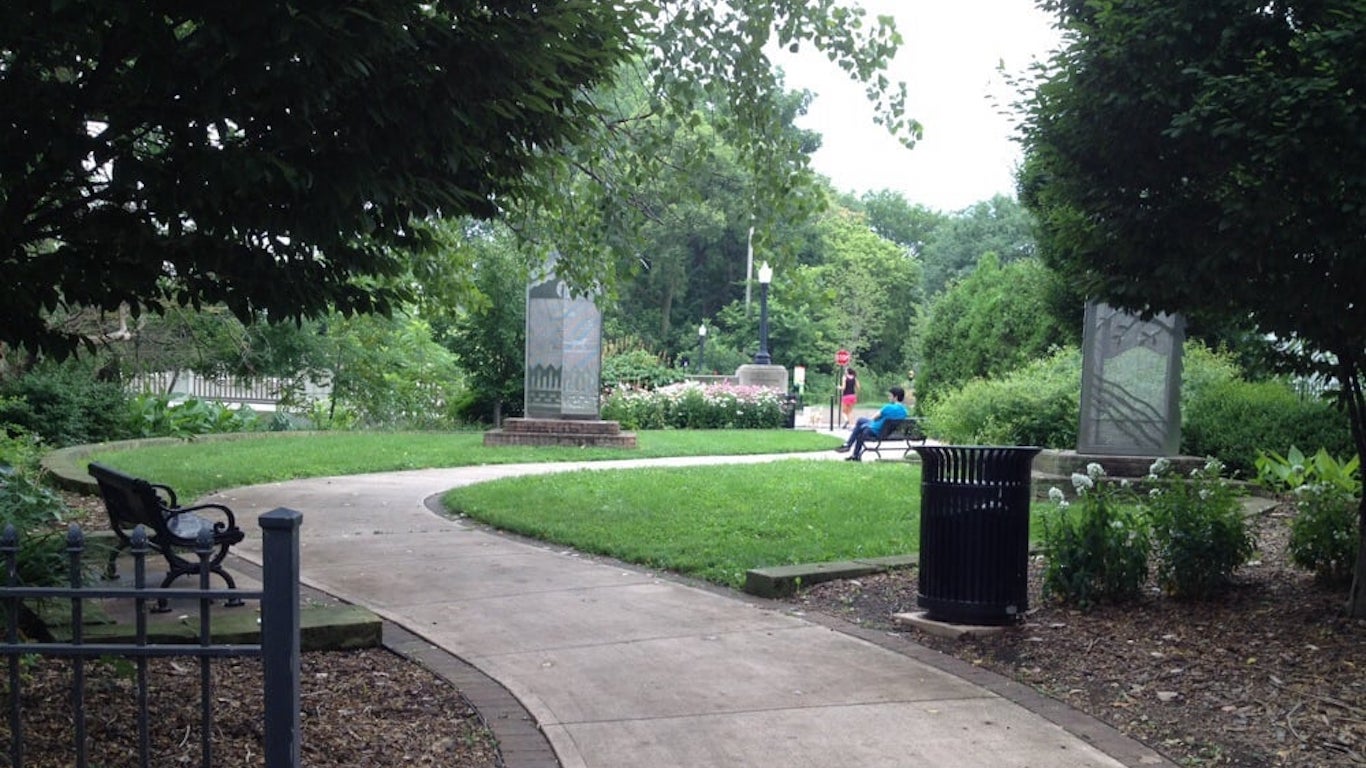
5. Columbus, OH
> Park: Side by Side Park
> Area: 0.19 acres
This tiny park, split into two parts (one much larger than the other) by Third Avenue, lies along the city’s Olentangy Recreation Trail and is used as a resting area by walkers and bikers. The southern section of the park offers benches and displays of flowers and plants as well as a two-part sculpture by Cleveland-area artist Charlotte Lees appropriately called “Side by Side.”
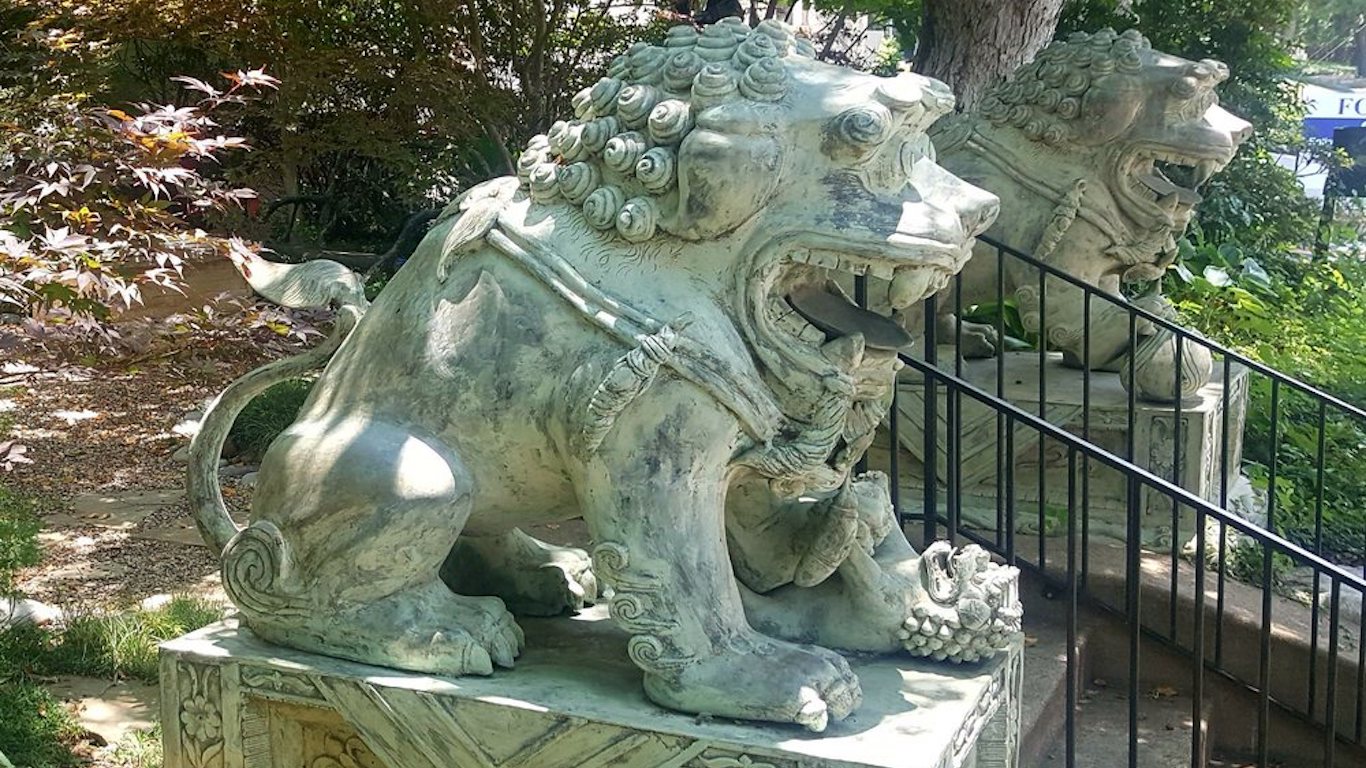
6. Dallas, TX
> Park: Dragon Park
> Area: Unknown
This mini-park, across the street from the Select Salon, a beauty parlor occupying three connected century-old houses in the city’s Oak Lawn neighborhood, was created by the salon’s proprietor as a place for his clients to relax. A sign at the tree-shrouded, Chinese-lion-guarded entrance to the park — once described by D Magazine as “the spookiest garden in Dallas” — reads, “This is a private park. You may enter at your own risk.” The spookiness derives from the statuary in the space, which include statues of fairies, angels, gargoyles, and, yes, dragons. There are benches in a terraced area of the park, and visitors speak of its tranquil character.
[in-text-ad]
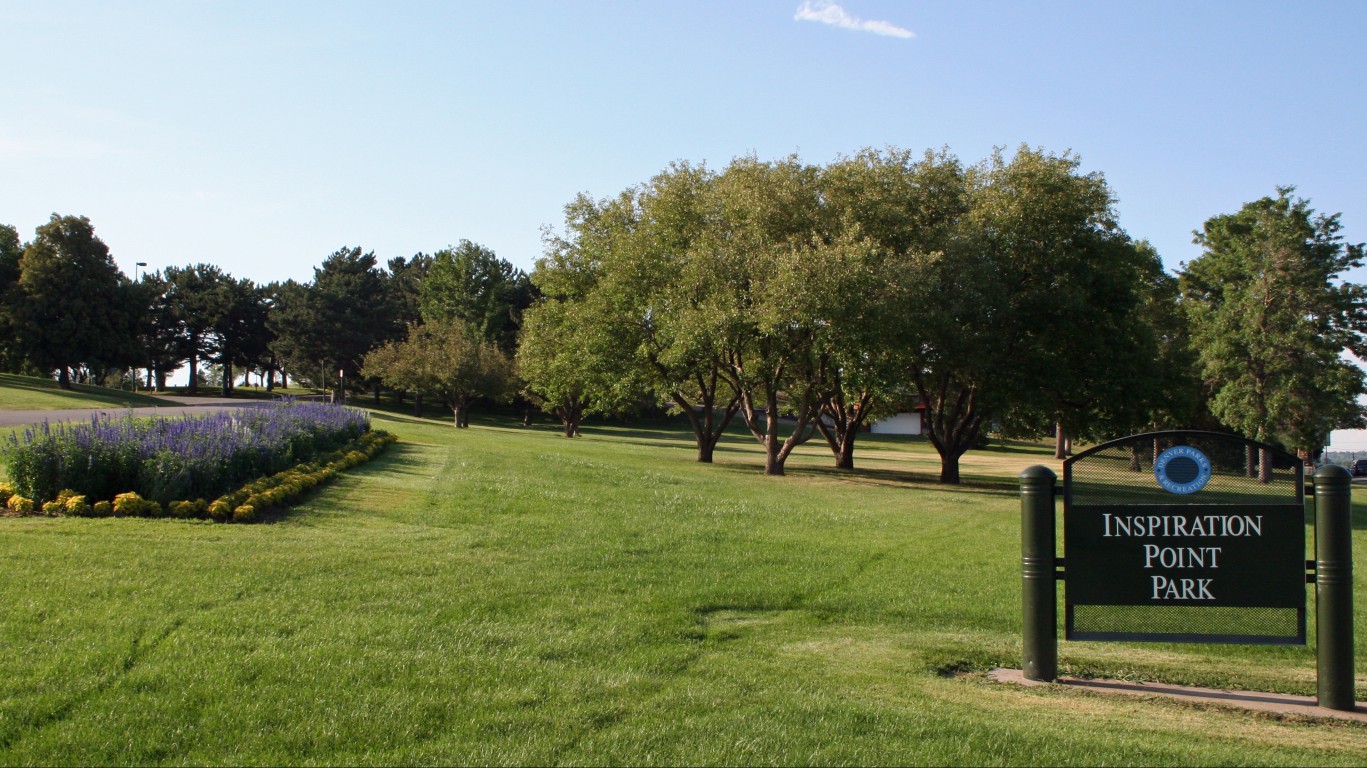
7. Denver, CO
> Park: Inspiration Point Park
> Area: 25 acres
Hemmed in by residential areas and an industrial zone northwest of downtown Denver, this park on the bluffs above Clear Creek Valley was opened in 1910. Originally conceived as a vista point looking out on the city to the east and the Front Range of the Rocky Mountains to the west, the park includes a picnic area, formal flower beds, a meadow, a double row of ponderosa pines, and a grove of linden, hackberry, silver maple, and honey locust trees.
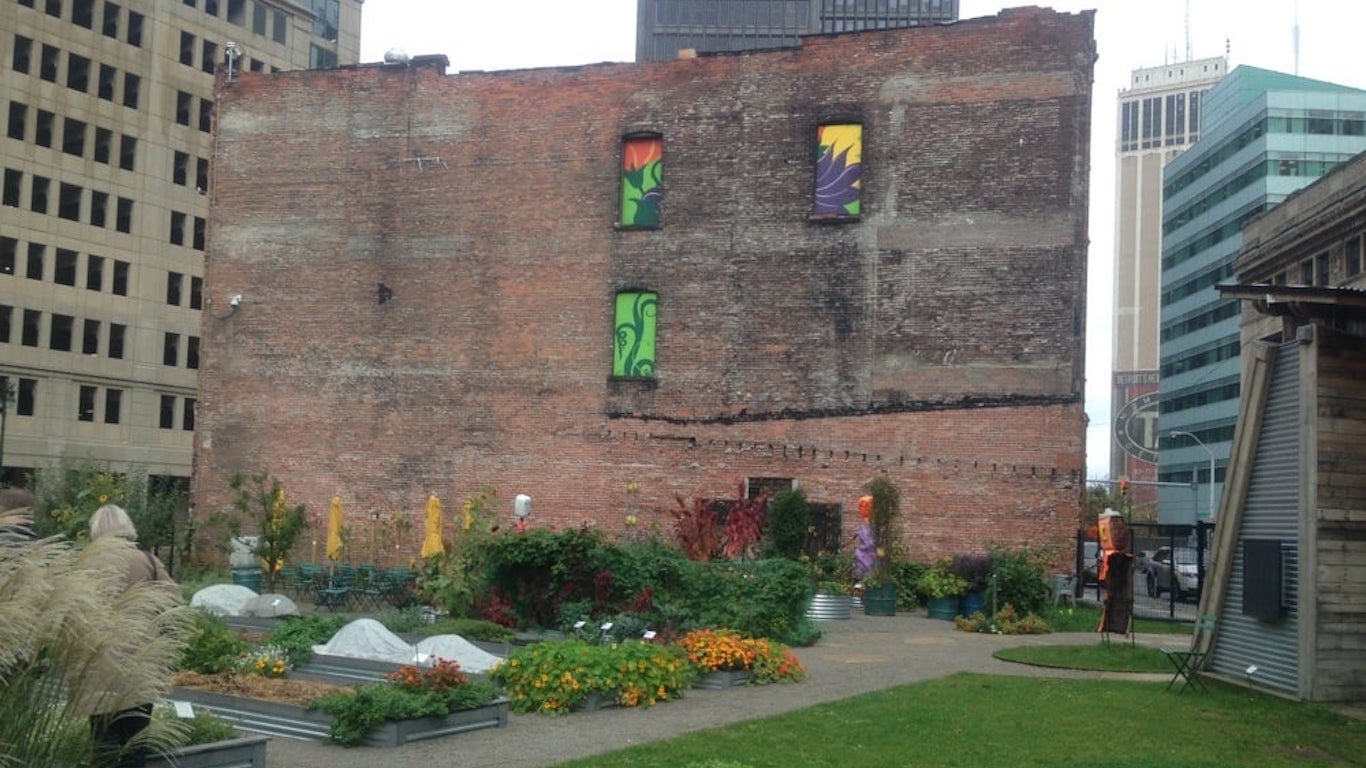
8. Detroit, MI
> Park: Lafayette Greens
> Area: .425 acres
Lafayette Greens is “hidden” not because it’s in an obscure location, but because it’s in a place where nobody would expect a garden to exist — the middle of downtown Detroit. The space was once the site of the historic Lafayette Building, demolished in 2010 (a portion of one old wall has been retained). Workers from nearby software company Compuware started a garden here in 2011. Three years later, nonprofit environmental group, The Greening of Detroit, took over the park. It has since become a showplace for urban farming, with raised beds filled with vegetables and flowers, as well as a park complete with benches and tables with umbrellas. There’s a farmers market on Thursdays from June through October, and free yoga, tai chi, belly dancing, and gardening classes in the evenings.
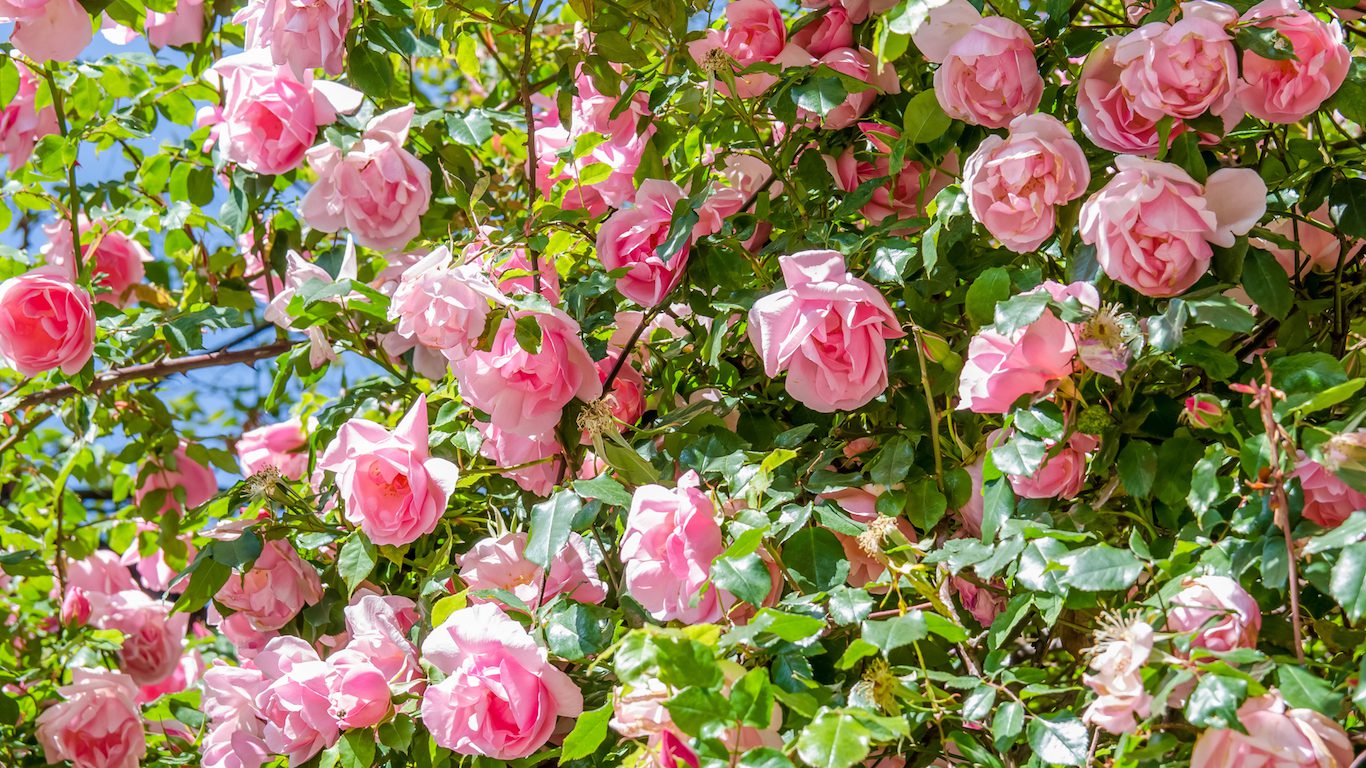
9. El Paso, TX
> Park: El Paso Municipal Rose Garden
> Area: 4 acres
This desert border town is better known for its spray parks — play areas where visitors are cooled by water sprayed from upright structures or the ground — than for displays of flowers. However, more than 1,500 rose bushes of more than 430 varieties fill this municipally-owned garden. Open from March through November, pathways and benches allow the public to enjoy the roses and arbors. The city and the El Paso Rose Society planted the first bushes in 1958. The garden was expanded from its original acre-and-a-half to its present size in 2005-2006.
[in-text-ad-2]
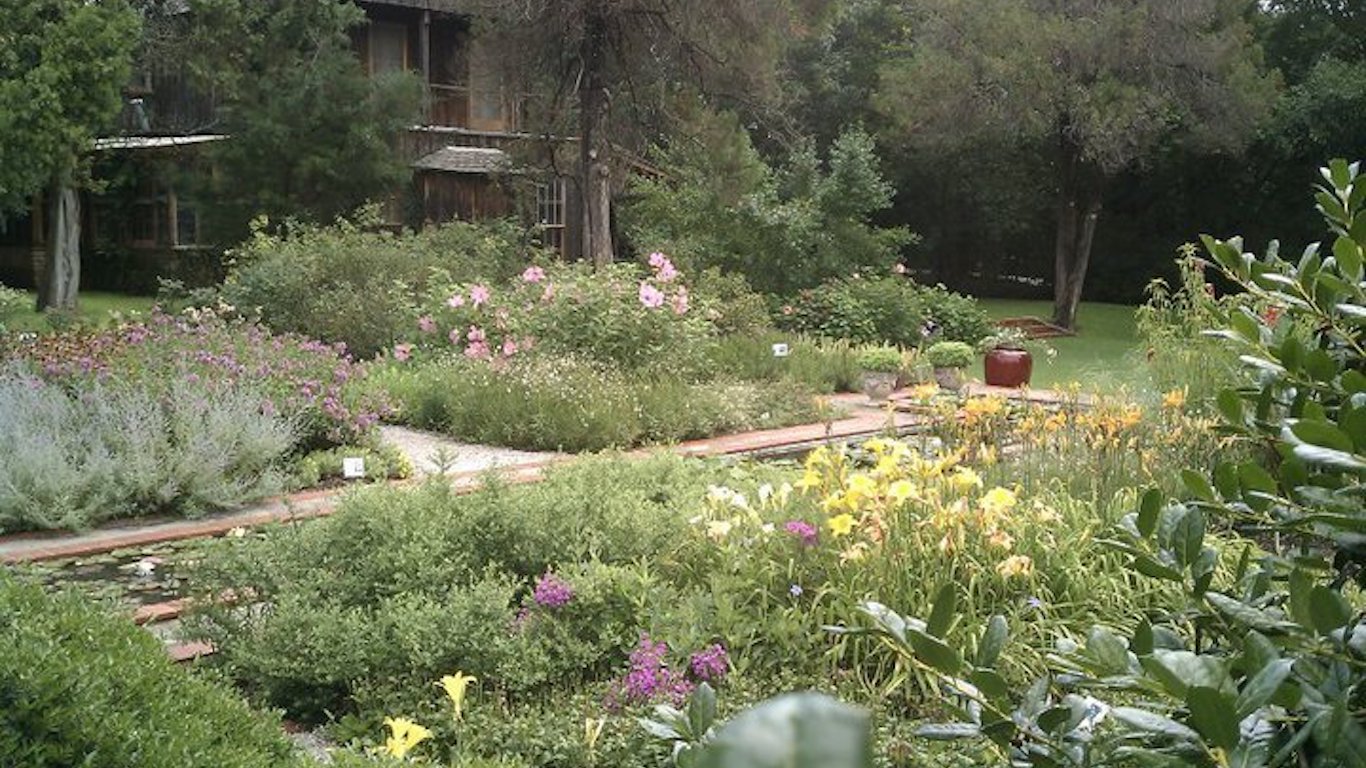
10. Fort Worth, TX
> Park: Weston Gardens
> Area: 4+ acres
About a quarter of this 17-acres landscape design, nursery, and garden retail operation — a designated Fort Worth historical site — is dedicated to an English-style garden. The garden is filled with plants that are mostly native to Texas or highly acclimated, with a focus on those that thrive in the north-central portion of the state. The property is a popular site for weddings.
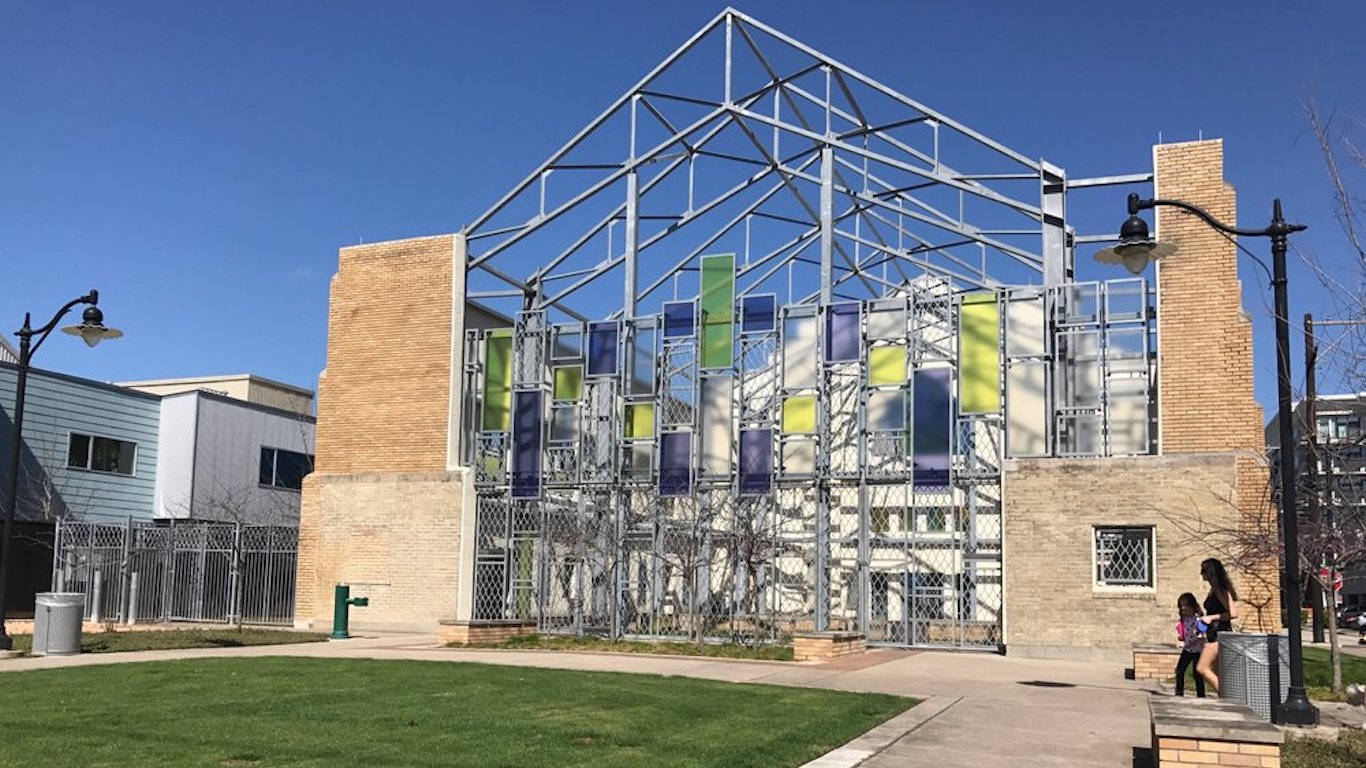
11. Houston, TX
> Park: Bethel Church Park
> Area: 0.5 acres
This unusual park was built in and around the ruins of an historic church ravaged by fire in 2005. Bethel Missionary Baptist Church, listed on the National Register of Historic Places, was built by freed slaves in the 1890s in the city’s African-American Freedmen’s Town neighborhood. The fire left behind only the walls, some concrete supports, and the concrete floor. In 2009, the church sold the ruins to the city of Houston, which worked with two architecture and design firms to create a unique indoor-outdoor park, with seating evocative of church pews, refurbished masonry, and decorative panels recounting the church’s history. In August, the park was temporarily closed for landscape renovation required by excessive foot traffic and dog waste, but it will reopen with limited hours.
[in-text-ad]
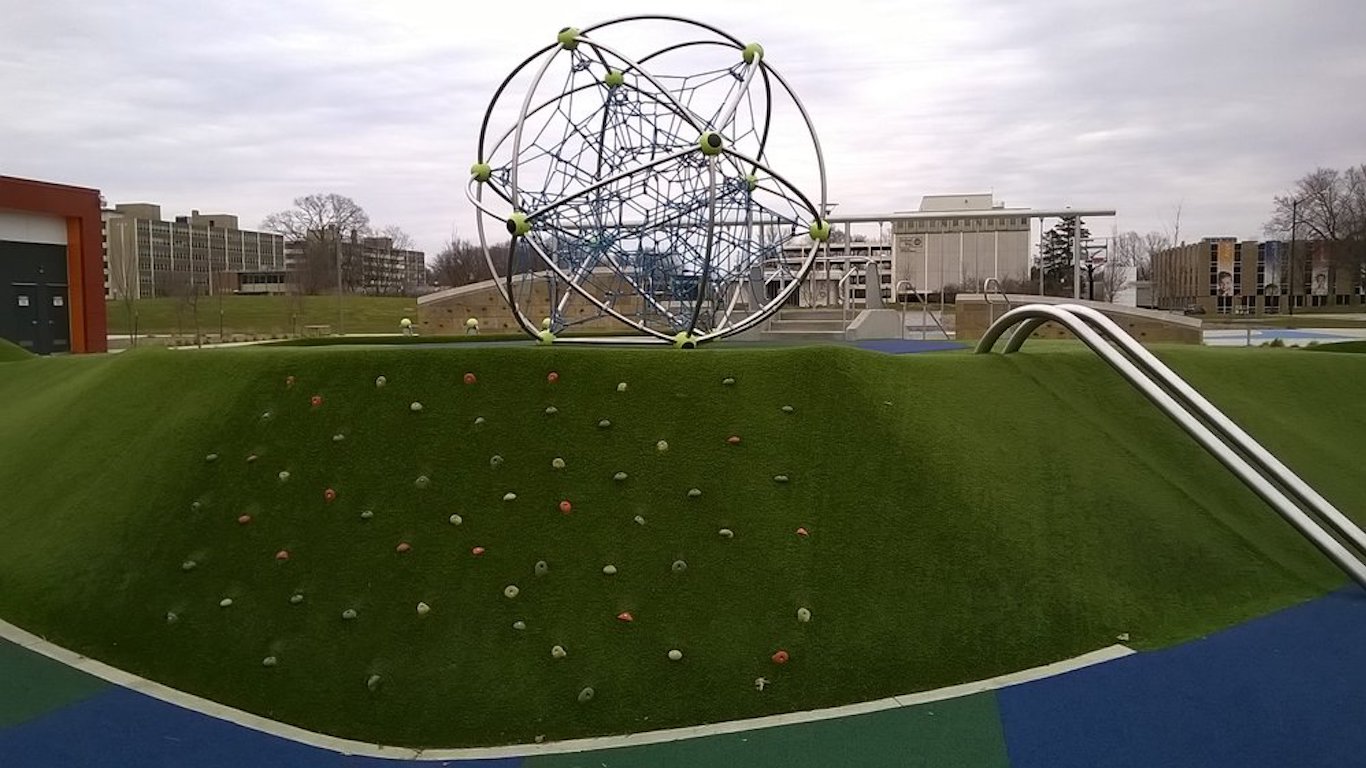
12. Indianapolis, IN
> Park: Tarkington Park
> Area: 10.5 acres
Named for the Pulitzer-Prize-winning novelist Booth Tarkington (“The Magnificent Ambersons,” “Alice Adams”), who once lived in the area, this park dates its origins to 1945, when the city of Indianapolis bought two square blocks here to establish a new public space. The park fell into disrepair and disuse in the latter 20th century, and despite plans for the park’s revival in 1985, a $5.6 million reboot of the park didn’t begin until 2016. The park is still developing, but already offers basketball and tennis courts, swinging benches, and playground facilities that include a fireman’s pole, artificial-grass slides, and a splash pad spraying water up from the ground. The neighborhood was plagued with gang warfare as recently as 2016, but conditions have improved and planners working with the Indianapolis Parks Foundation believe that the park will be safe and will catalyze economic development in the area.
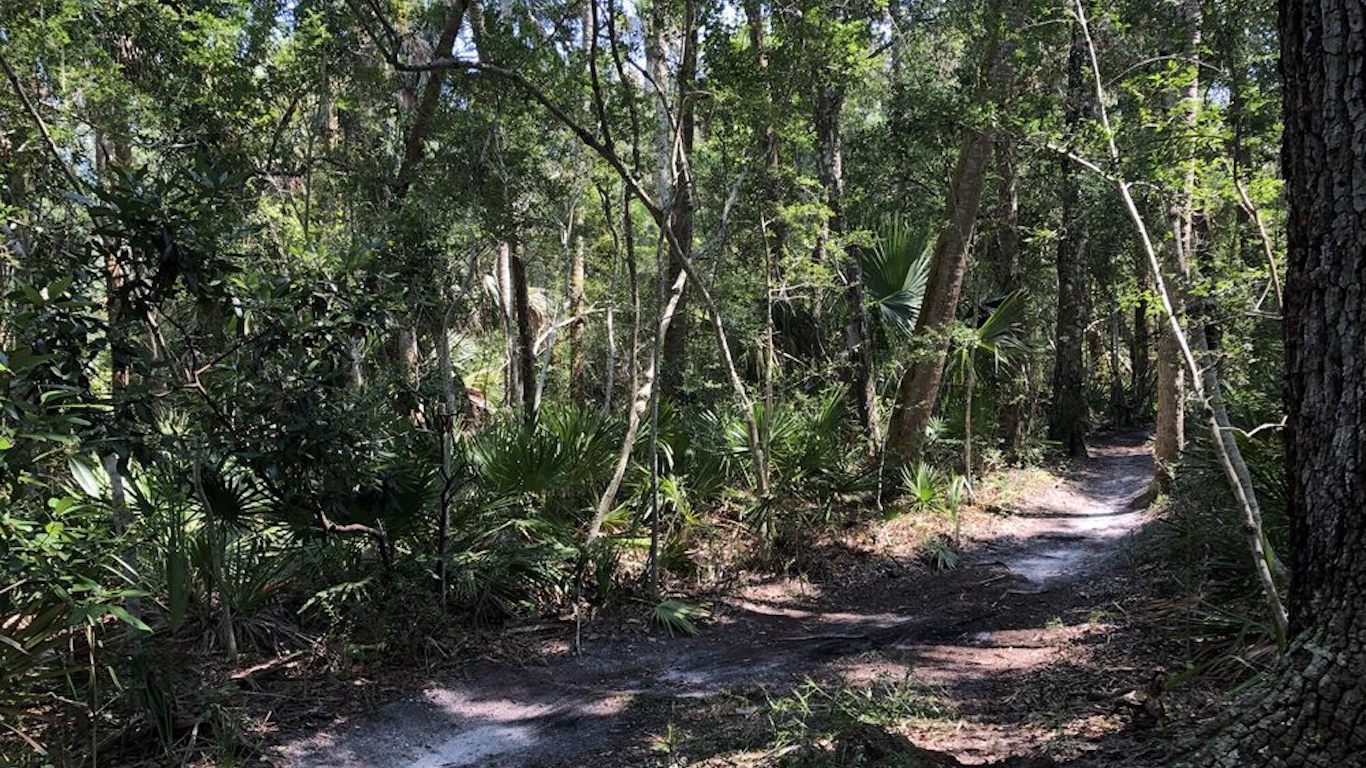
13. Jacksonville, FL
> Park: Kathryn Abbey Hanna Park
> Area: 450 acres
Though it’s one of the region’s largest parks, Kathryn Abbey Hanna Park is slightly off the beaten path, just north of better-known shorefront areas like Atlantic, Neptune, and Jacksonville beaches. The park includes a beach fronting the Atlantic Ocean and a 60-acre freshwater lake, and is known for fishing and surfing access — but it’s also considered prime mountain-biking territory. A 2.7-mile hiking trail through thickets of cabbage palms and bracken ferns is another attraction.
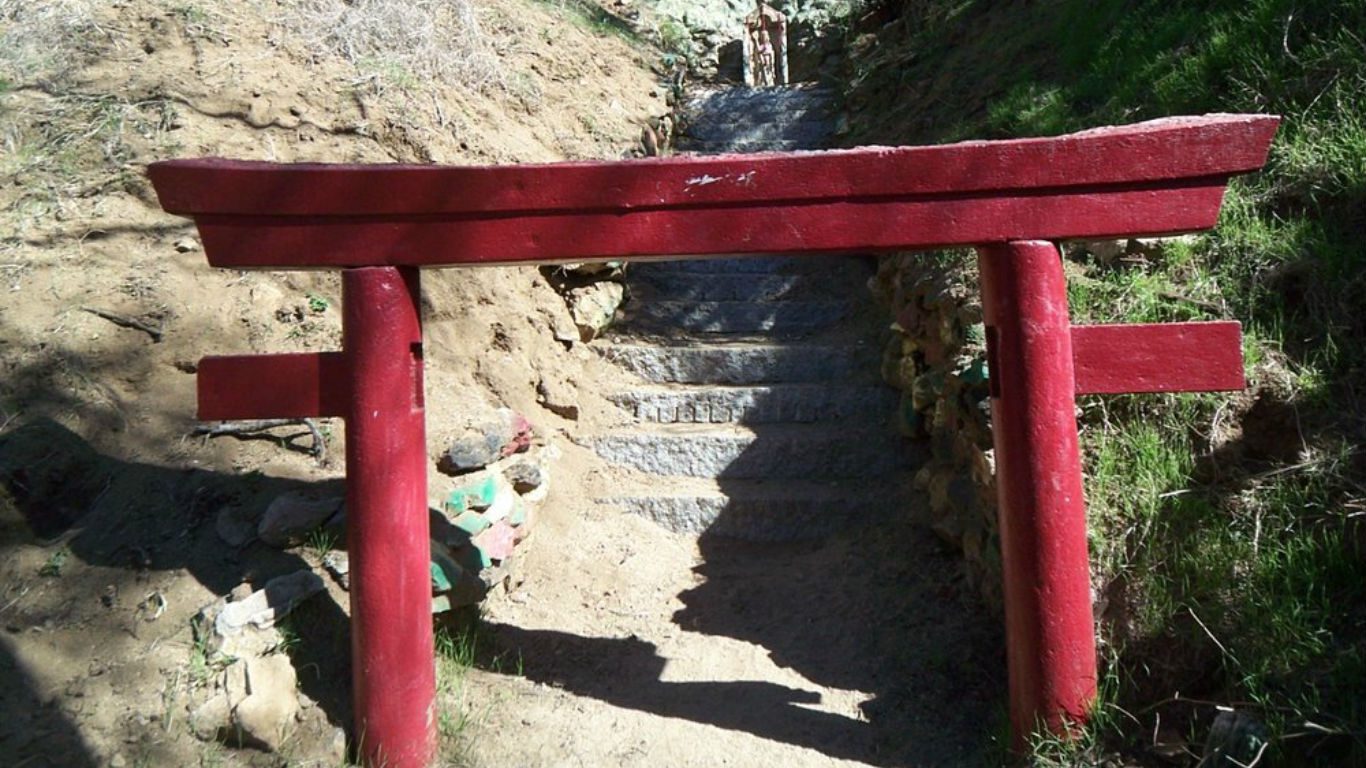
14. Los Angeles, CA
> Park: Wattles Garden Park
> Area: 47.58 acres
Just a couple of blocks north of Hollywood Boulevard, in the lower reaches of the Hollywood Hills, this sprawling park was once the winter home of Omaha banker and transportation mogul Gurdon Wattles. Today, the property includes a private 4-acre community garden, a 1907-vintage Mediterranean/Mission Revival-style mansion with its formal gardens (house and gardens are open only for special events), and a vast sward of lawn and an open-to-the-public “American garden.” The garden includes a stream, a Japanese garden complete with lanterns, stands of palm, oak, sumac, eucalyptus, and bay laurel trees. Through a Japanese torii gate and up a steep pathway and a cut-stone staircase is a traditional Japanese shrine. Views of the city and the landscape as far as the Pacific Ocean are spectacular.
[in-text-ad-2]
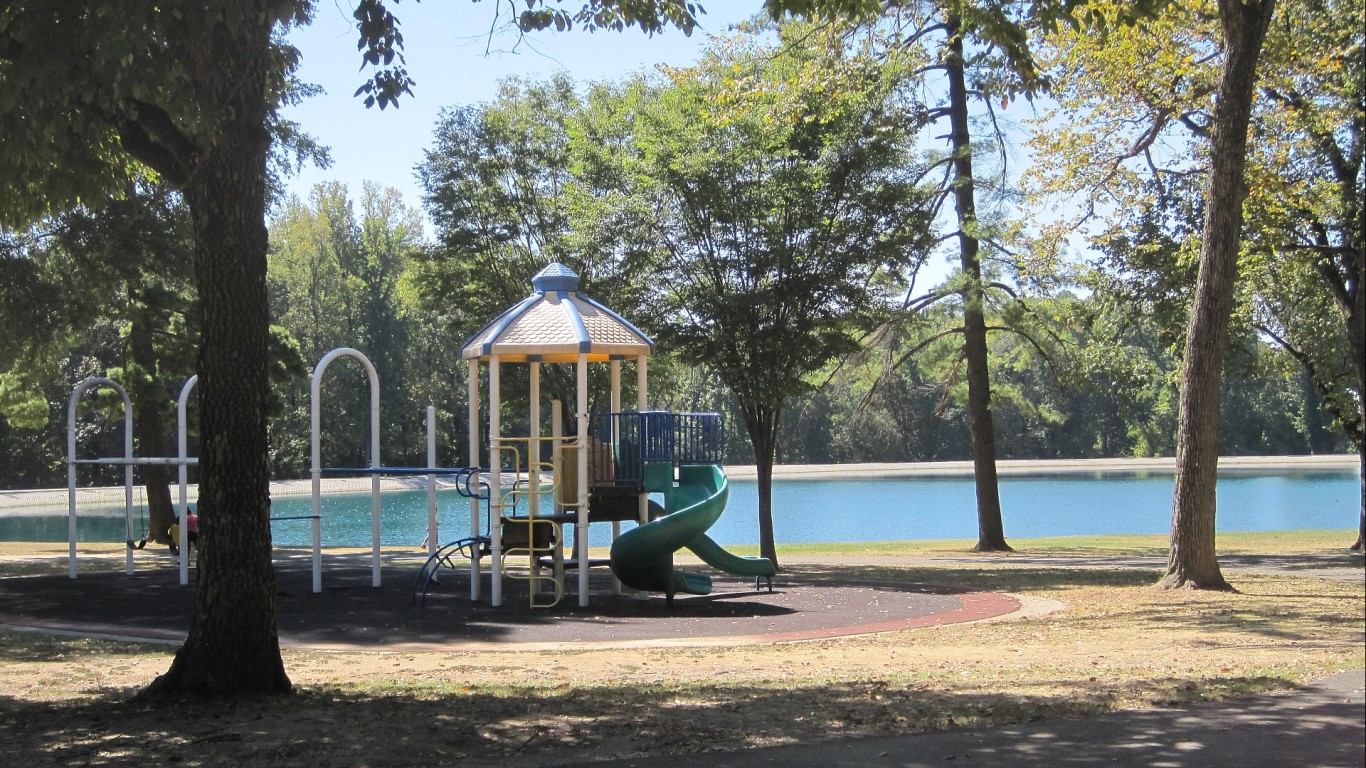
15. Memphis, TN
> Park: Martin Luther King Riverside Park
> Area: 379.32 acres
Formerly called simply Riverside Park, this long stretch of land along an artificial harbor called McKellar Lake boasts a virgin forest, several playgrounds, plenty of open space, a boat ramp and marina, a ball field and tennis courts, and even an under-utilized public golf course. Designed by prominent landscape architect George Kessler and opened in 1903, the park was renamed in honor of Martin Luther King Jr. in 1968, following the civil rights leader’s assassination that year in the city.
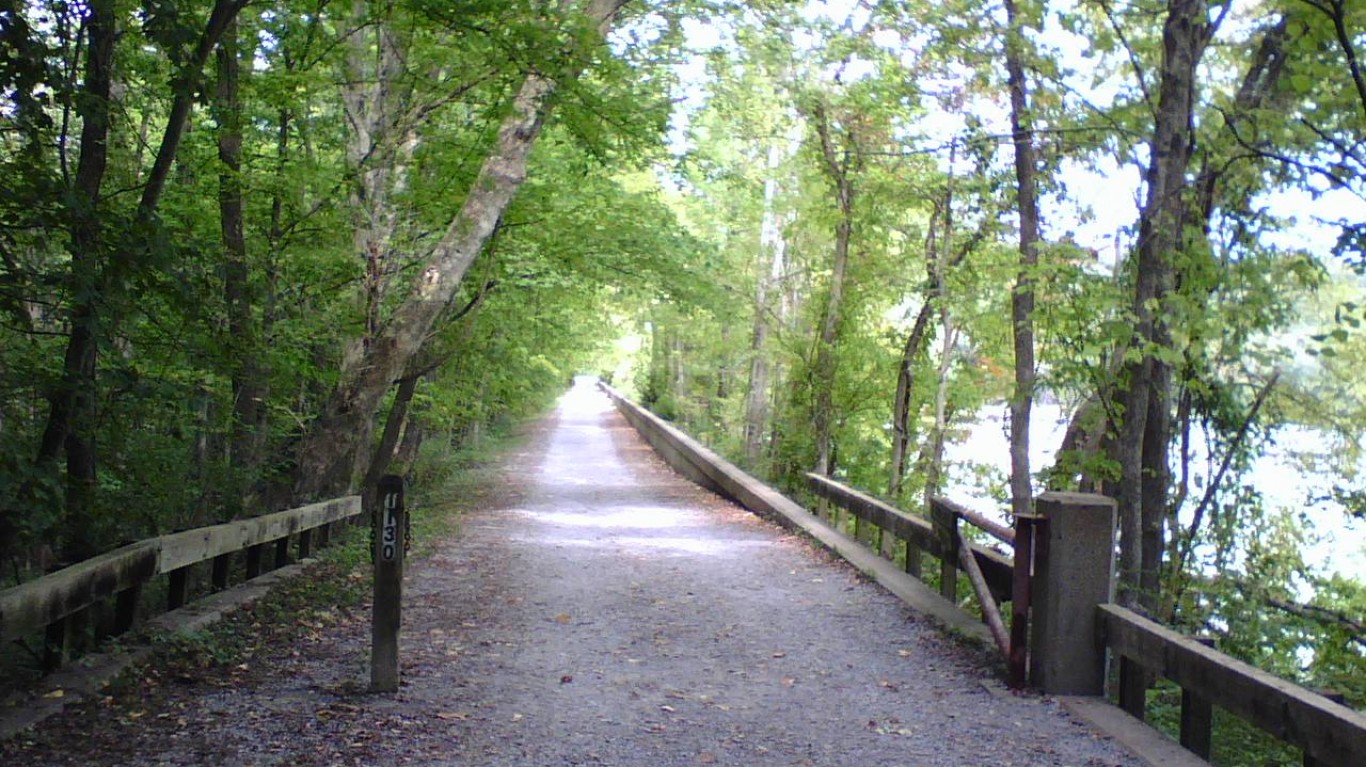
16. Nashville, TN
> Park: Radnor Lake State Park
> Area: 1,402 acres
The site of fierce fighting during the Civil War and later of an industrial complex built by the Louisville and Nashville Railroad, Radnor Lake began to attract migrating birds in the 1920s. In 1923, it was declared a wildlife sanctuary by the Tennessee Ornithological Society. Community, environmental group, and government efforts in the 1970s gave what is now officially called the Radnor Lake State Natural Area protected status. Wildlife viewing is a big draw here, with owls, heron, bald eagles, waterfowl, migrating tanagers, mink, otters, and various amphibians and reptiles among the fauna. There are more than 6 miles of hiking trails, and park rangers lead nighttime astronomy hikes, wildflower walks, canoe floats, and other expeditions.
[in-text-ad]
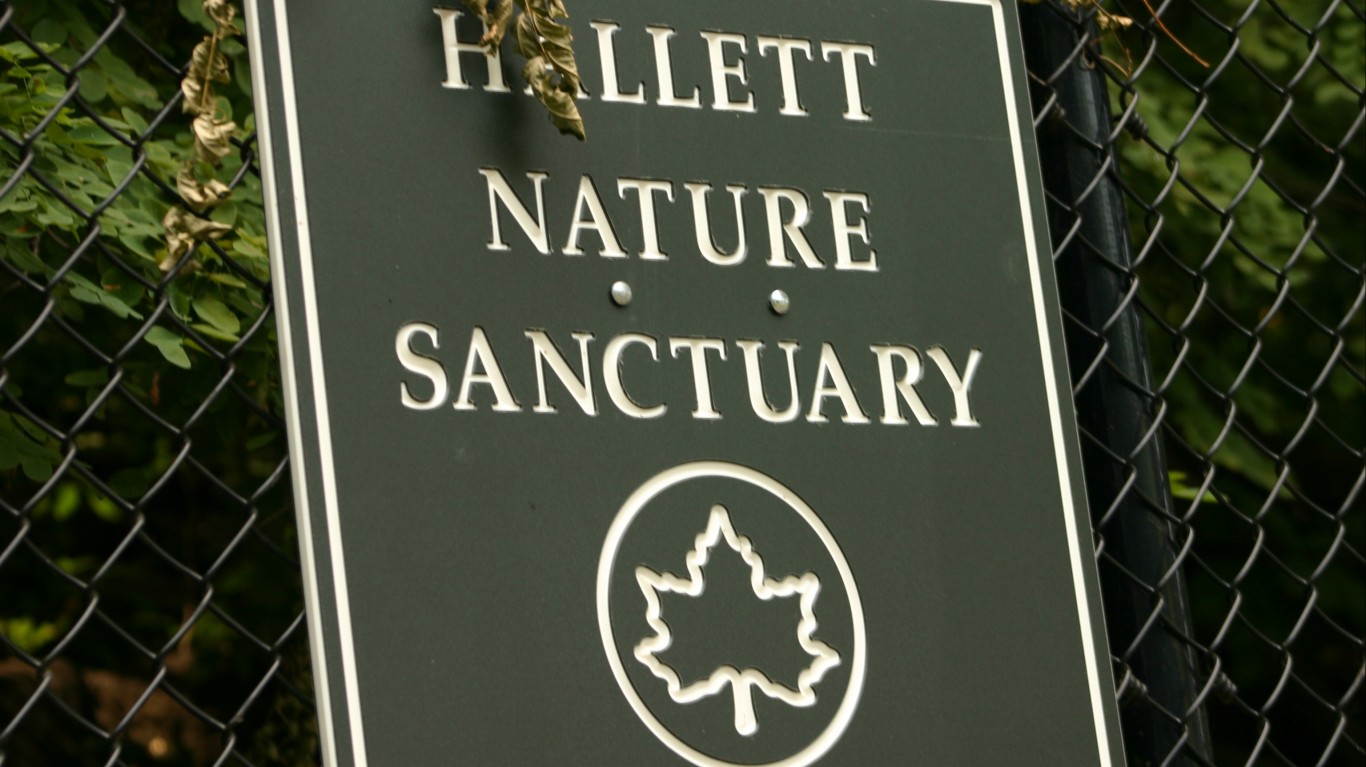
17. New York City, NY
> Park: Hallett Nature Sanctuary
> Area: 4 acres
Manhattan’s 843-acre Central Park, the first landscaped public park in America, opened in 1859. It is one of the most famous and often-visited public spaces in the world. Only a tiny fraction of those who throng the place annually discover this little park-within-a-park. Preserved as a bird sanctuary in 1934 and renamed after birdwatcher and civic leader George Hervey Hallett Jr. in 1986, this patch of wildness just a few hundred yards from busy West 59th Street remained untouched until the Central Park Conservancy began restoring and maintaining it in 2001. Volunteers introduced native plant varieties and removed invasive species, and since 2003, the sanctuary has been open to the public daily. The Conservancy also offers guided tours six days a week.
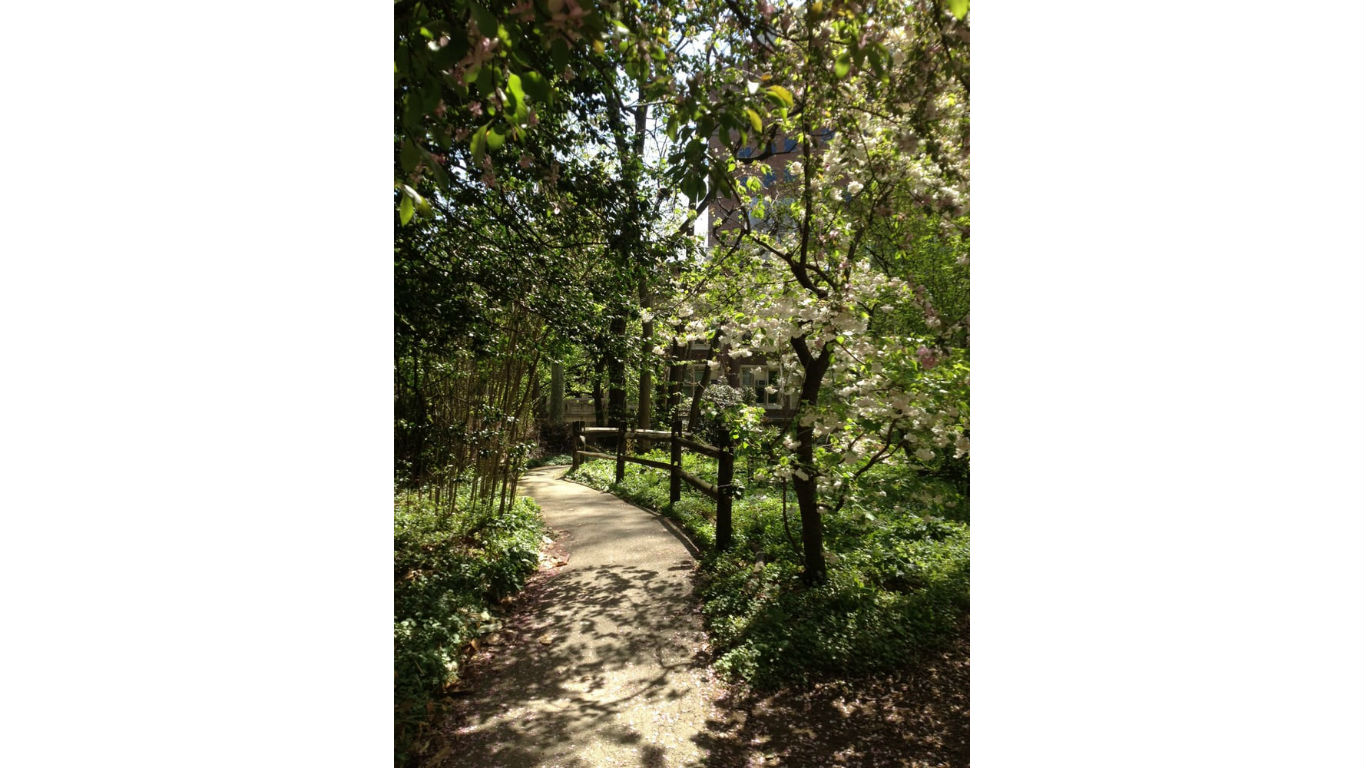
18. Philadelphia, PA
> Park: James G. Kaskey Memorial Park
> Area: 3 acres
Hidden away on the University of Pennsylvania campus, this shady oasis was originally opened as a five-acre botanical research garden in 1897. Greenhouses, plant beds, ponds for aquatic plants, rock gardens, and a bog garden were built in its early years. In the early 20th century, construction of new university buildings on its periphery reduced it to its present size. The garden — one of more than 30 public gardens in Philadelphia, which styles itself “America’s garden capital” — is densely planted with flowers, trees, shrubs, and ground cover. Mulched paths and slate steps provide access, and there are wood and iron benches for relaxation.
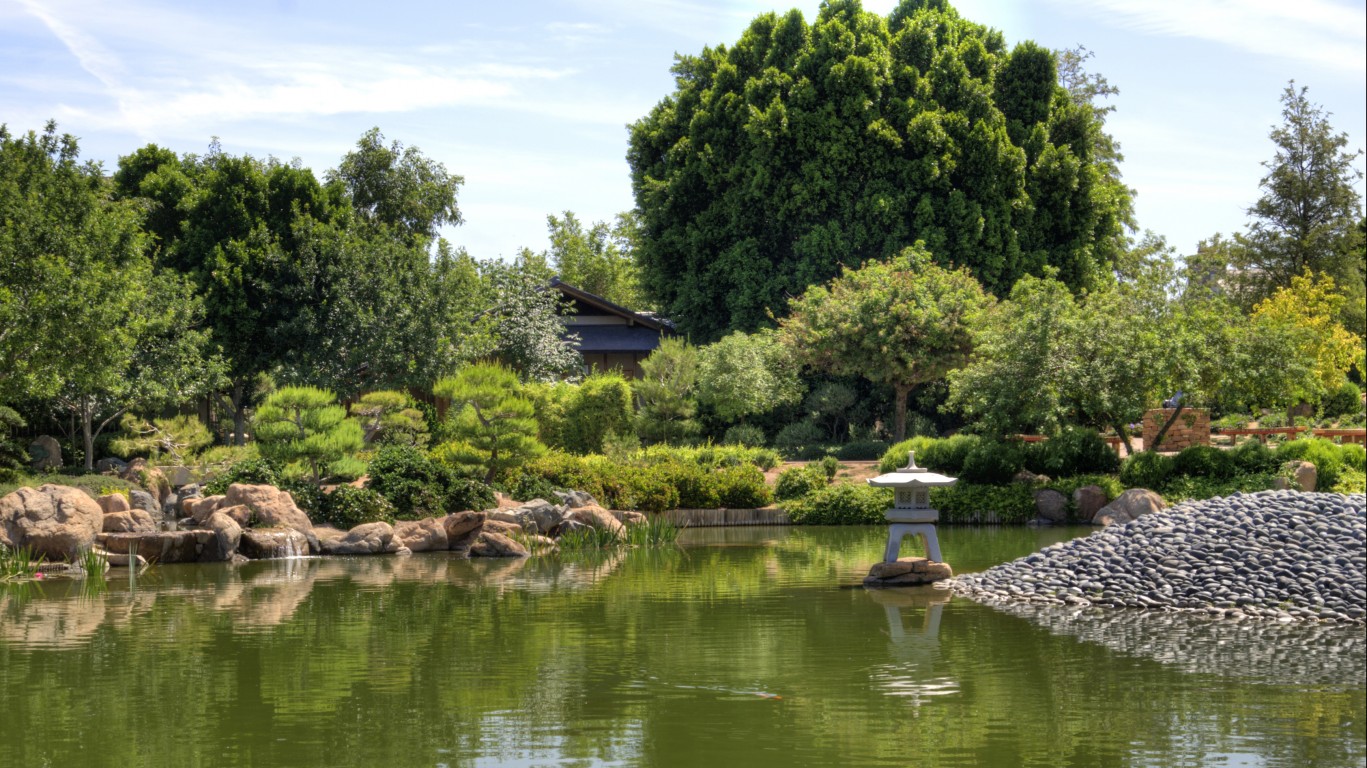
19. Phoenix, AZ
> Park: Japanese Friendship Garden
> Area: 3.5 acres
This tranquil Phoenix garden, opened to the public in 2002, is officially called Ro Ho En — a concatenation of the Japanese words “ro” for heron, the symbol of Himeji, Phoenix’s sister city; “ho” for phoenix (the mythical bird); “en” for garden. It is designed as a stroll garden, a style developed in Japan’s Edo period (1603-1867), through which visitors are supposed to walk along a path clockwise, passing such features as trees, boulders, and a pond. Ro Ho En has all of these (the pond is stocked with more than 300 koi), as well as a tea garden and tea house, stone footbridges, hanging lanterns, and more than 50 varieties of plants.
[in-text-ad-2]
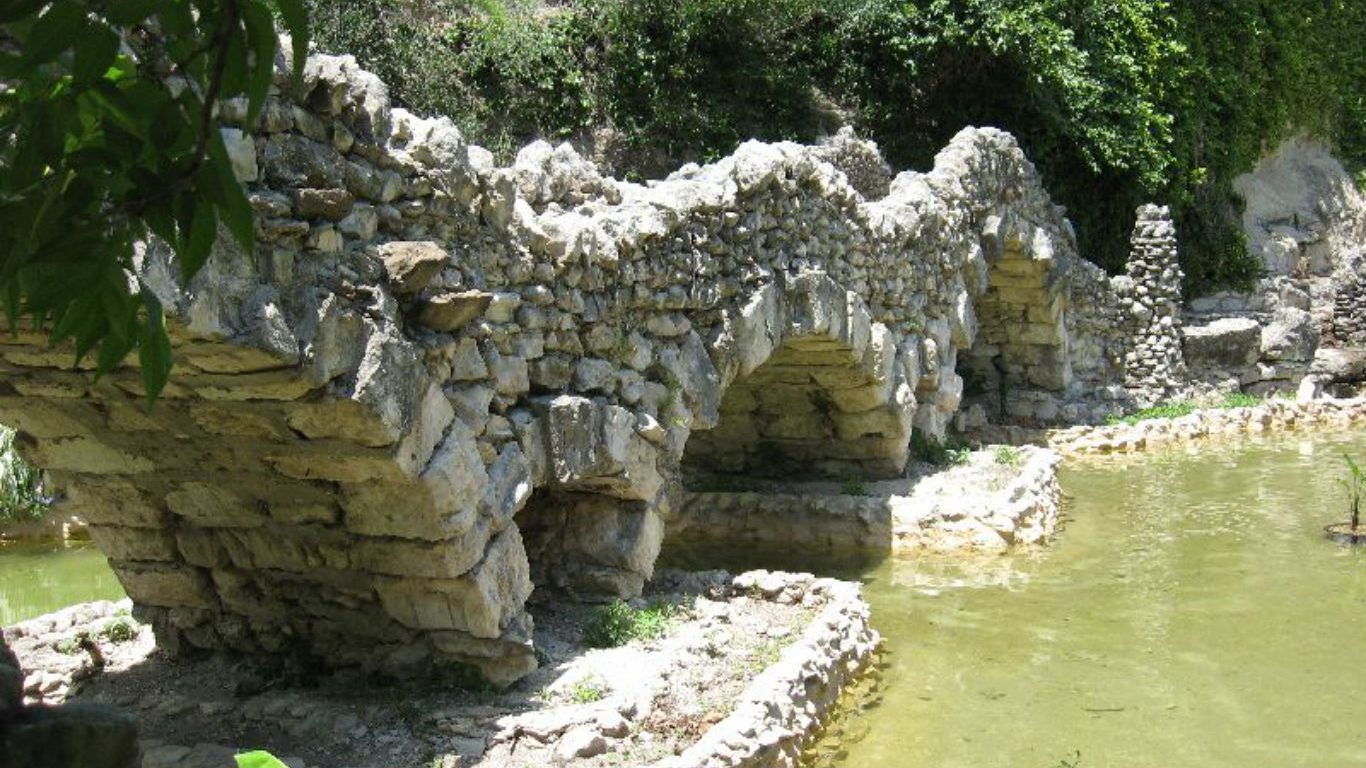
20. San Antonio, TX
> Park: Miraflores Garden
> Area: 4.5 acres
Located within the city’s Brackenridge Park, across from the campus of the University of the Incarnate Word, this garden park was created between 1921 and 1930 by a doctor named Aureliano Urrutia, who immigrated to San Antonio from Mexico in 1914. To remind him of his native Xochimilco, a historic city just south of Mexico City renowned for its system of canals and artificial islands, he filled the place with statuary and sculptures (including works by noted sculptor Dionicio Rodríguez), waterways, pools, and fountains. The property fell into disrepair after Urrutia sold it in 1960. Through the efforts of local preservationists, Miraflores is being restored, and the work-in-progress was opened to the public in March. The original brick walkway has been repaired, and the works of Rodríguez and other artists and craftsmen, including a stone bench inset with colorful Talavera tiles, are on display.
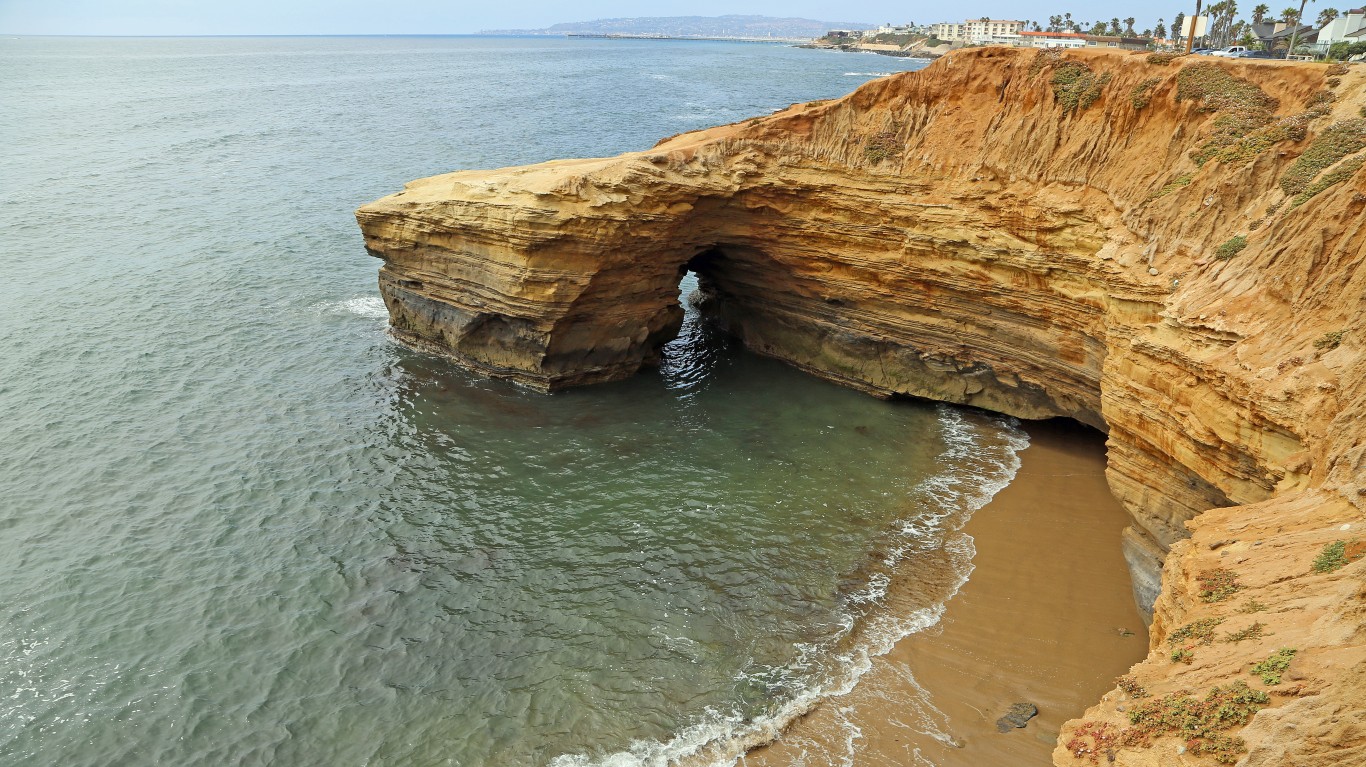
21. San Diego, CA
> Park: Sunset Cliffs Natural Park
> Area: 68 acres
Sunset Cliffs, dedicated in 1983, stretches for a mile-and-a-half along rocky cliffs above the Pacific coastline. There’s a three-mile family-friendly hiking trail through a native sage scrub habitat, stairs leading down the rocks to tidepools and kayaking launch spots, and many vantage points for views of the ocean. The park is famous as a vantage point to watch beautiful sunsets.
[in-text-ad]
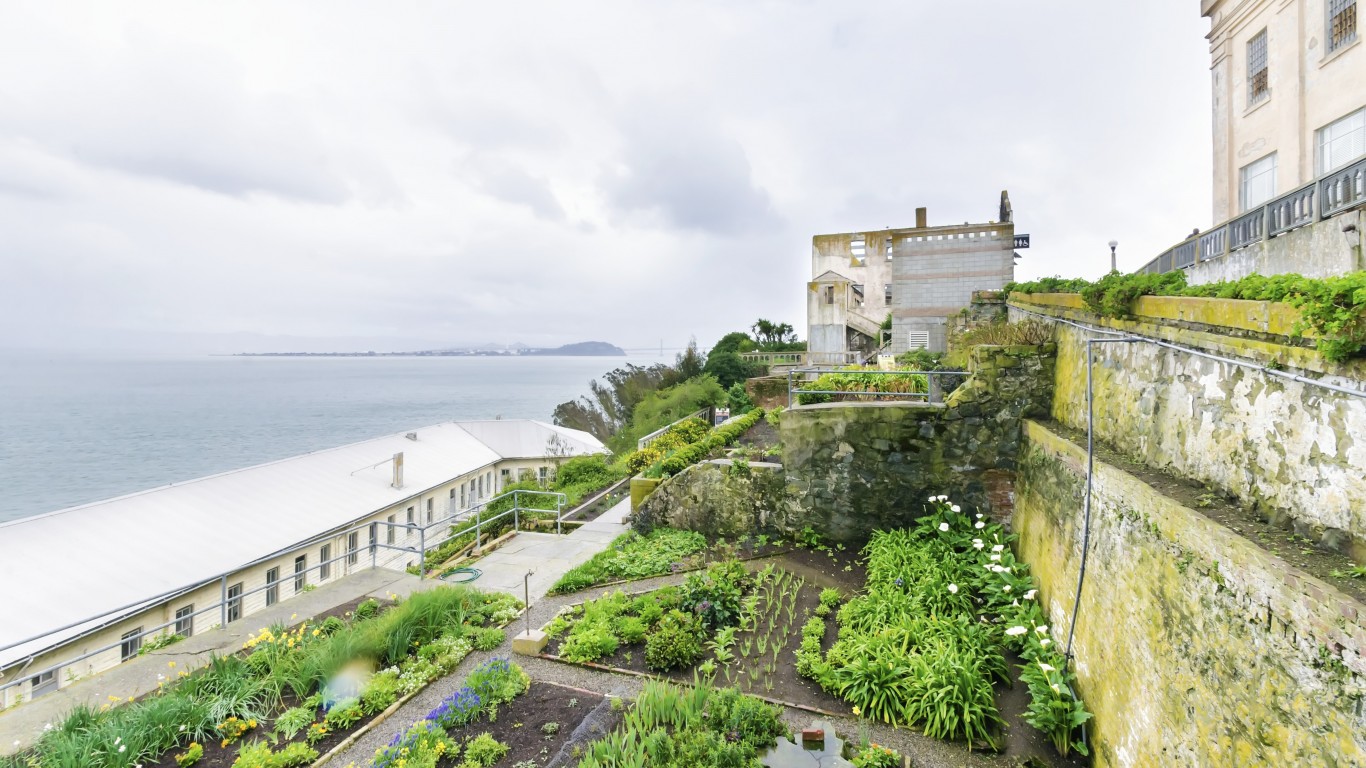
22. San Francisco, CA
> Park: The Gardens of Alcatraz
> Area: 4.5 acres
The island of Alcatraz, in San Francisco Bay, was the site of one of the country’s most famous federal prisons between 1933 and its closing 30 years later. A one-time home to such infamous criminals as Al Capone, “Machine Gun” Kelly, and Whitey Bulger, it was known as “The Rock,” a nickname that hardly suggests parklands or flowers. Victorian-style gardens were planted there as early as 1865, however, and when the prison opened, wardens allowed inmates to tend and expand them. The plantings disappeared or were overgrown after the prison closed, but in 2003, the National Park Service and two conservancy organizations began restoring them. Today, a variety of native and imported flowers, trees, and shrubs flourish on The Rock. Old fuchsias, pelargoniums, and roses were discovered and revived, and nasturtiums and Shirley poppies are among the 200-plus species and varieties of plant life that grow here. There are frequent ferry cruises to Alcatraz from San Francisco’s Embarcadero, near Fisherman’s Wharf. Guided tours of the gardens are available on Fridays and Sundays.
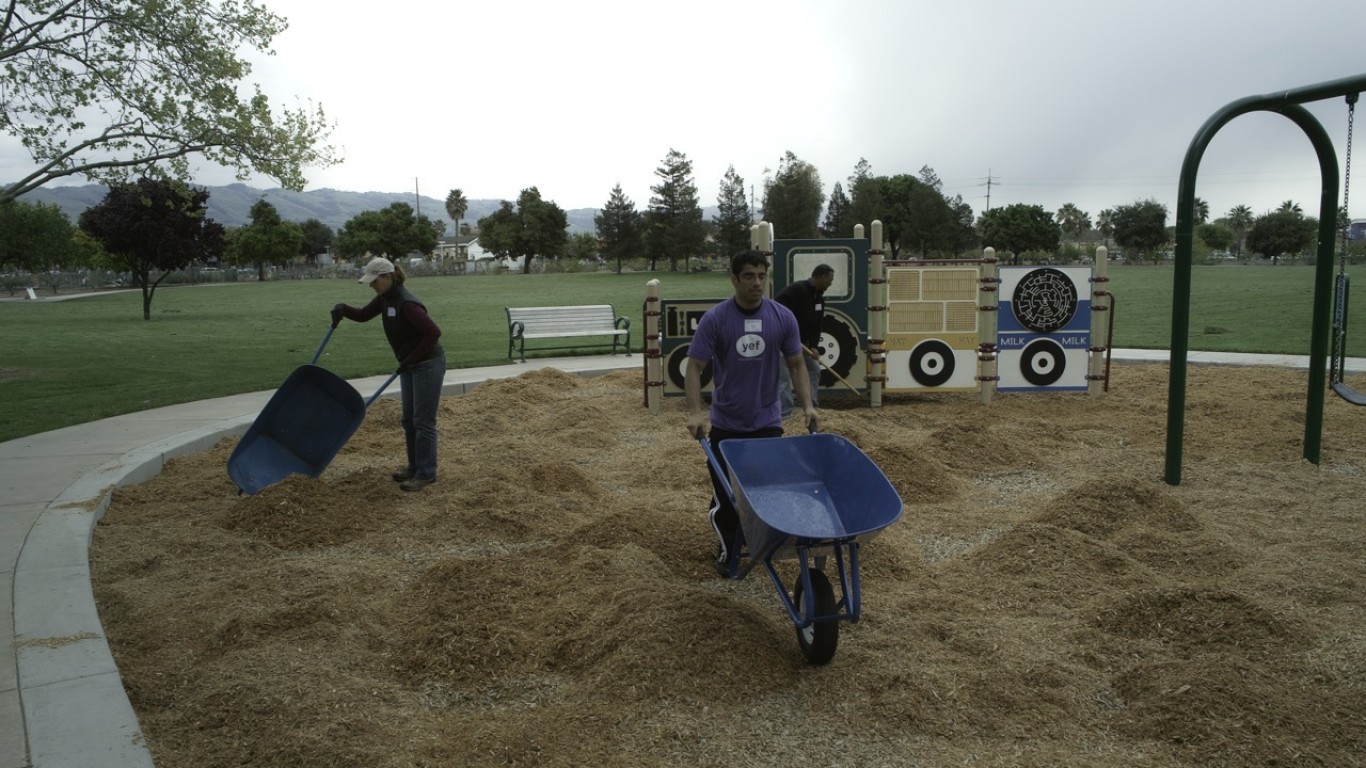
23. San Jose, CA
> Park: Emma Prusch Farm Park
> Area: 43.5 acres
When Emma Prusch deeded her 86-acre dairy farm, just east of downtown San Jose, to the city seven years before she died at the age of 93, she asked that it be maintained as an agricultural-themed park with a rural feeling. Part of the property became the home of the Police Activities League, but most of the rest was dedicated as Emma Prusch Farm Park in 1982. The park is home to the city’s largest barn, a venue for local 4H projects, and other attractions, including a grove of 168 redwood and maple trees plus a hundred-tree heritage apple orchard and a kitchen garden filled with plants reflecting Prusch’s German ancestry. There’s also lots of open grassland for picnicking, kite-flying, and relaxing.
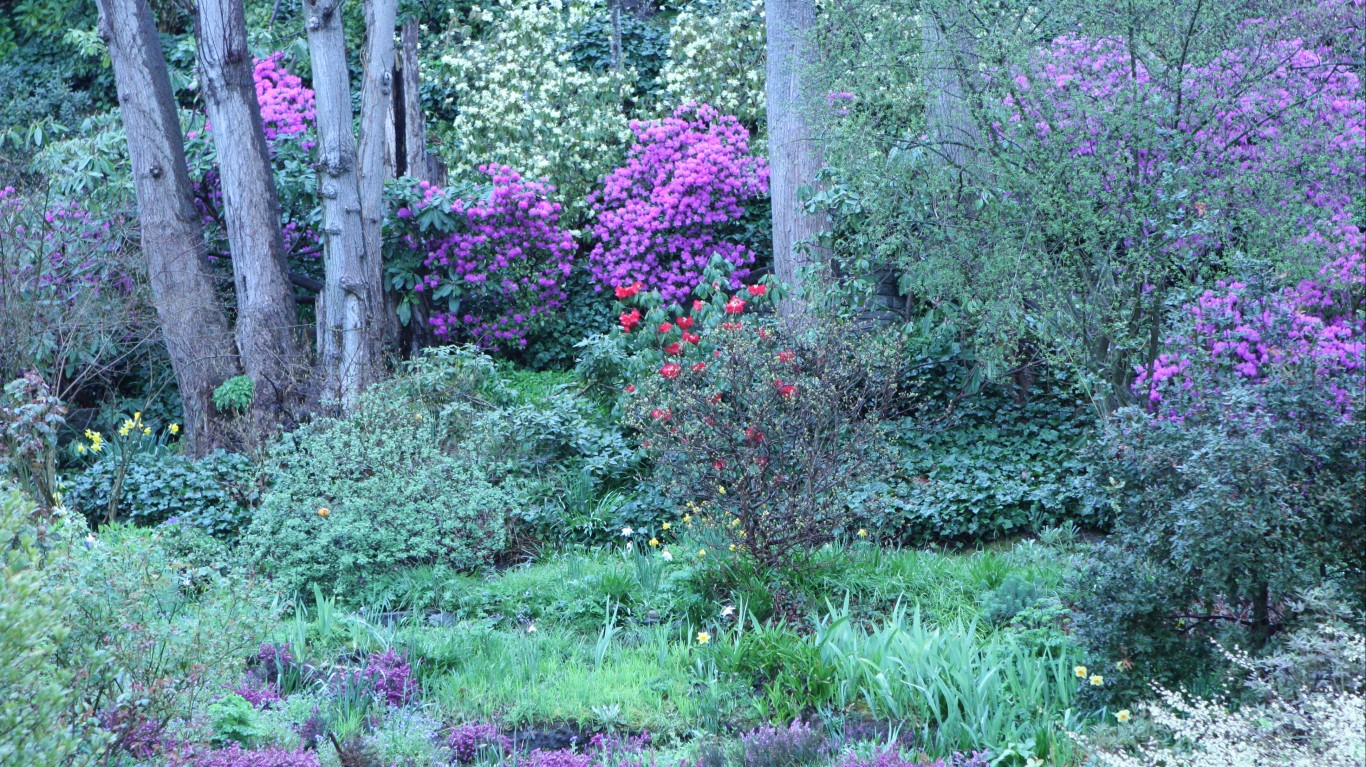
24. Seattle, WA
> Park: Streissguth Gardens
> Area: about 1 acre
Seattle architect and architecture professor Daniel Streissguth built a house on a lot in the city’s Capitol Hill neighborhood in 1962 and immediately started planting gardens around it. In 1965, Ann Roth Pytkowicz, a psychologist at the University of Washington Medical School, moved next door and began a garden of her own. The two met and three years later got married and combined their gardens. They subsequently bought adjacent plots and expanded the garden, finally donating the property to the city in 1996. Seattle then bought a larger hillside tract that abutted the Streissguth land and opened the garden to the public. Today, hiking and walking trails and paths crisscross the land. Plantings include a bank of rhododendrons, a collection of hybrid azaleas, Pacific Coast irises, shrub roses, trellised berries, and a grove of stewartia trees.
[in-text-ad-2]
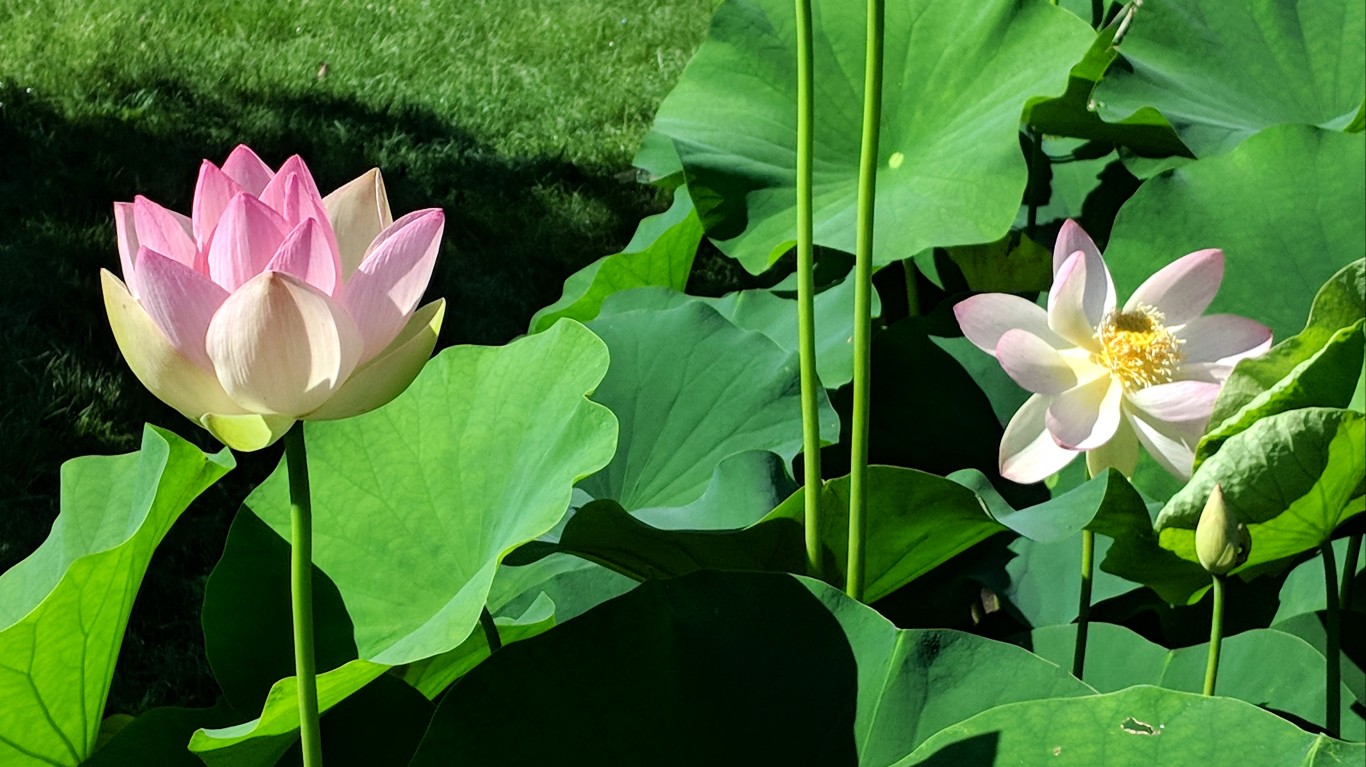
25. Washington, DC
> Park: Kenilworth Park and Aquatic Gardens
> Area: 700 acres
A part of Anacostia Park, located just across the Anacostia River from the United States National Arboretum and partially abutting the Maryland border, is the only National Park Service site devoted to aquatic plants. The origins of the park date back to 1882, when Walter Shaw, a Civil War veteran from Maine, planted water lilies in a pond there. He and his daughter later added more than 40 ponds, connecting them with dykes and waterways and planting weeping willows and other native vegetation around them. The Shaws developed the complex into one of the largest aquatic plant nurseries in America, eventually cultivating about 75 varieties of water lilies and lotus flowers. The Army Corps of Engineers bought the site in 1938 and promptly handed management of it to the National Park Service. Today, visitors can explore the park from a boardwalk trail, or hike a 0.7-mile dirt path. There’s room for picnicking or relaxing, and birdwatching is a popular attraction.
Retirement can be daunting, but it doesn’t need to be.
Imagine having an expert in your corner to help you with your financial goals. Someone to help you determine if you’re ahead, behind, or right on track. With SmartAsset, that’s not just a dream—it’s reality. This free tool connects you with pre-screened financial advisors who work in your best interests. It’s quick, it’s easy, so take the leap today and start planning smarter!
Don’t waste another minute; get started right here and help your retirement dreams become a retirement reality.
Thank you for reading! Have some feedback for us?
Contact the 24/7 Wall St. editorial team.